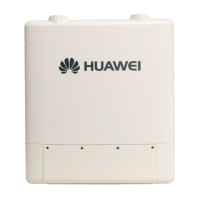LTE TDD B2268H
User Guide
Copyright © Huawei Technologies Co., Ltd.
Table 13-5 VoIP > Call Rule
Use this section to create or edit speed-dial entries.
Select the speed-dial number you want to use for this phone number.
Enter the SIP number you want the LTE Device to call when you dial the
speed-dial number.
Enter a short description to identify the party you call when you dial the
speed- dial number. You can use up to 127 printable ASCII characters.
Click this to use the information in the Speed Dial section to update the
Speed
Dial Phone Book section.
Use this section to look at all the speed-dial entries and to erase them.
This field displays the speed-dial number you should dial to use this entry.
This field displays the SIP number the LTE Device calls when you dial the
speed-dial number.
This field displays a short description of the party you call when you dial the
speed-dial number.
Use this field to edit or erase the speed-dial entry.
Click the Edit icon to copy the information for this speed-dial entry into the
Speed Dial section, where you can change it. Click Add when you finish
editing to change the configurations.
Click the Delete icon to erase this speed-dial entry.
Click this to erase all the speed-dial entries.
Click this to set every field in this screen to its last-saved value.
13.6 Technical Reference
This section contains background material relevant to the VoIP screens.
13.6.1 VoIP
VoIP is the sending of voice signals over Internet Protocol. This allows you to make phone calls
and send faxes over the Internet at a fraction of the cost of using the traditional circuit- switched
telephone network. You can also use servers to run telephone service applications like PBX
services and voice mail. Internet Telephony Service Provider (ITSP) companies provide VoIP
service.
Circuit-switched telephone networks require 64 kilobits per second (Kbps) in each direction to
handle a telephone call. VoIP can use advanced voice coding techniques with compression to
reduce the required bandwidth.

